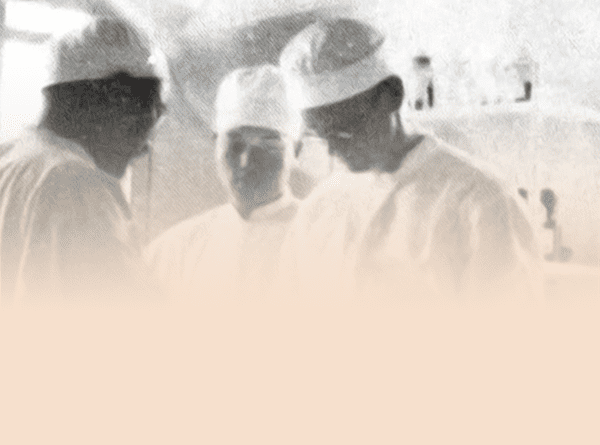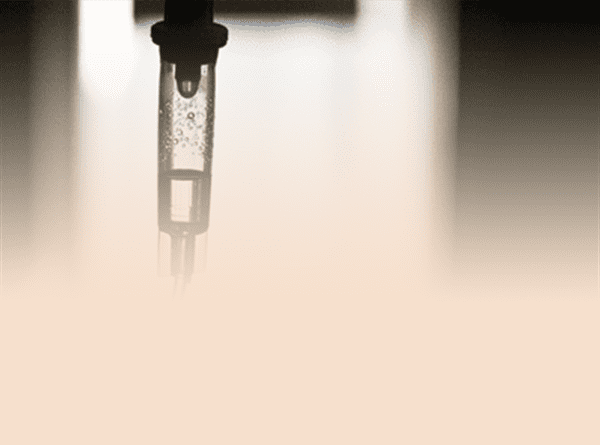Malpractice Fear
By Curtis E. Harris, M.S., M.D., J.D.
Today's Christian Doctor, Winter 1996, Volume XXVII, Number 6.
Editor's note: This article is the first of a series dealing with the issue of medical malpractice.
The fear of malpractice reminds me of President Franklin D. Roosevelt's words to a discouraged America in the midst of the Great Depression:
"First of all, let me assert my firm belief that the only thing we have to fear is fear itself- nameless, unreasoning, unjustified terror which paralyzes needen efforts to convert retreat into advance."1
Because a malpractice suit can be personally devastating, it is essential that we share our concerns and fears to avoid the nameless, unreasoning, and unjustified terror that can paralyze our mission to be light in a darkened world.
Although malpractice affects all physicians, it impacts Christian physicians in unique ways. A malpractice suit can unjustly threaten the security of our families, the credibility of our Christian witness, our willingness to be open and transparent with others, and the way we feel about our patients and ourselves. Fortunately, with few exceptions, the threat of malpractice often appears to be more significant than it actually is.
Understanding Where We Are and How We Got There
Medical practice has changed dramatically over the past decades. The first half of this century was marked by an almost blind trust in the skill and dedication of physicians. Technology was seen as the greatest ally of society against disease, and therefore worth the cost. The public image of medicine was the television series "Marcus Welby, M.D." Each advance in science was hailed as a breakthrough. However, with alarming speed, as the cost of medicine and technology began to impact both the federal and family budgets, physicians rapidly became fallible in the public eye. The once-friendly media began to paint all physicians with dark shades of greed, incompetence, unwelcome paternalism, and the various sins that have beset mankind since the Fall. Realism emphasized the tawdry and ignored the noble. For a time, it seemed that balance had been lost in an effort to make the dual political points that medicine costs too much and that technology could sometimes hurt as uch as help.
In the midst of this shift, a larger social metamorphosis occurred, heralded in medicine by the rejection of benign paternalism in favor of the demand for greater patient autonomy and more complete informed consent. Radical individualism became the god of the age. Arguably, personal autonomy reached its apex in the law when the United States Supreme Court decided Roe v. Wade in 1973, and then, in reliance on Roe, extended personal autonomy in both Planned Parenthood v. Casey (1992) and Cruzan v. Director, Missouri Department of Health (1990).3 In the wake of these decisions, medicine became the legal and ethical, though not necessarily moral, purveyor of abortion on demand and death by request." While not entirely deserved, medicine lost the moral high ground.
By the early 1970s, both legislators and jurors seemed more willing than before to apply the well-developed principles of tort law to physicians. Due in large part to the social changes previously mentioned, enough skepticism toward the profession had entered the mind of the average juror to create a problem that had not existed in earlier years-that is, a lingering doubt that the doctor had actually done something wrong. The combination of a tarnished public image and the pervasive social emphasis on personal autonomy meant that the doctor may not have known ( or done) what was best. The opinion of the injured patient mattered more, and the assurances of the doctor mattered less.
In addition, medicine seemed unable or unwilling to police itself. Incompetent physicians continued to practice while colleagues, hospitals, and boards of licensure looked the other way.5 In the eyes of some, the only way to achieve social change and individual justice was to sue. The climate was ripe for change.
The Malpractice Crisis
In the recent past, there have been two periods of time (from 1975 to 1979 and from 1985 to 1988) during which the cost of malpractice insurance rose to unprecedented levels.' Lack of available insurance and extremely high premiums forced a few physicians in high-risk subspecialties to dramatically change their practice: The term "defensive medicine" was coined to describe tests or procedures performed solely for legal protection.' Many predicted that a public grown accustomed to an unrealistic view of technology would sue more often than ever before when health was not perfectly restored.
Paranoia ran deep in the medical community. The previous unhappy alliance between doctors and lawyers deteriorated into full-scale anger and distrust. Plaintiffs' attorneys were blamed for the crisis as if they alone had created it. The practice of medicine seemed to be spinning out of control.
Fortunately, the crisis of the 1985 to 1988 period now seems to have been an adjustment of the system and not a sign of collapse. Malpractice premiums have fallen an average of 7 percent per year since 1989 and malpractice awards have decreased 3 percent per year since 1989-"9,10 The cost of insurance for the average physician continues to represent a nominal cost of doing business, rather than an impossible burden. In addition, there is ample data to show that the American jury system has acted intelligently and conservatively in all areas of tort liability, and that highly publicized cases are newsworthy because they are odd or unusual.11 Current state and federal demands for reform of the tort system indicate that the pendulum of public opinion has swung back past the middle.12 Public satisfaction with the medical profession continues to be higher than with any other group, a fact that is reflected by the jury's frequently noted desire not to find fault in a medical malpractice case. Good, competent medical practice, more than ever before, remains the best defense against a malpractice suit. Most authorities in this field emphasize the serious nature of malpractice, but few treat it today as if it is a public crisis.13
Frivolous Cases
One of the most persistent complaints brought by physicians against the legal system is the tolerance of the courts for groundless malpractice suits and the lack of a remedy for the physician's lost time and emotional suffering defending such a suit. However, the problem that neither medicine nor law seems able to resolve is one of definition; that is, what is a frivolous case? Simply because a physician wins a case does not mean that important issues were not disputed at trial. In the same manner, the fact that a case is settled against a physician on the recommendation of a malpractice insurance company does not imply that the case necessarily had merit. Malpractice suits can be won or lost, or settled, based on factors that have little to do with the care the patient received.
Typically, the courts are hesitant to prejudge the merits of a malpractice suit; therefore, some cases that have only limited value will go to trial. The central issue in the dispute between physicians and lawyers is how often this occurs. Most of the literature in this area concentrates on the clearly meritless cases that are filed, not those that are merely equivocal. Recognizing this limitation, it is generally true that most malpractice claims have some logical basis in fact, even though they may not be examples of gross malpractice. Meritless, frivolous, or harassment cases are those with virtually no legitimate, disputed issues.
Even if we accept the legal definition of a meritless case as one with no legitimate, disputed issues, there is remarkably little data concerning the frequency of harassment filings. However, some facts suggest that they are both infrequent and diminishing. First, the Federal Civil Code governs (in part) attorney conduct in the courts. Section 11 provides sanctions (personal penalties) and assessment of cost if an attorney knowingly fails to properly investigate the facts of a case, files a case in which a dispute does not actually exist or intentionally misrepresents the case to the court.14 Since enactment, Section 11 sanctions have risen sharply, thereby discouraging future misconduct.
A second factor that limits the number of frivolous malpractice actions is the cost of bringing a case to court, a cost borne by the attorney if he loses. In general, the cost of a simple malpractice action that is tried is between fifty to one hundred thousand dollars. Most plaintiffs' attorneys will carefully investigate a claim before filing it to avoid Section 11 sanctions and dismiss or settle a case for financial reasons before taking it to court. Of course, incompetent lawyers exist, and even competent lawyers can make mistakes, but the system attempts to limit the actions of both. Finally, insurance companies and physicians can (and do) act to limit awards by refusing to settle meritless cases.
For the sake of the rest of the discussion, I will assume, based on the available data, that the number of meritless cases that proceed to settlement or trial is less than 1 percent."This assumption is important, since any case that is not meritless is necessarily a case "with merit," the subject of the next section.
Cases with Merit
Before discussing the legal consequences of substandard care, it is important to recognize two facts: (1) there is such a thing as substandard care, and (2) every physician has delivered substandard care on numerous occasions, depending on the length of his or her career. The uncertainty of medicine and the normal fallibility of human endeavor teaches us that, while motive and desire to do good are helpful, nothing can prevent negligence in medicine. There are things we can do to reduce our errors, and there are things we can do to decrease our risk of being sued, but there is nothing we can do to make our practice perfect. The pressure that a physician can place upon himself or herself to be perfect can reach extreme and unrealistic proportions, without the constant reminder that God expects us to do our best, but not to be flawless.
Let me add a few additional words of caution before continuing. Malpractice suits are typically not brought because someone thinks a doctor is a "bad apple" or practices poor medicine overall. Some of the most frequently sued specialties are exactly those that require the most trairung, skill, and dedication (such as OB/GYN, orthopedics, and neurosurgery). Nor does a physician ever start out the day saying, "Today, I just don't care, so I'm going to do it-I'm going to malpractice!" If we intend to harm someone else, we are guilty of a crime, not malpractice. Finally, a physician often does not know that he or she has provided substandard care until long after the fact, especially in those instances when the injury is caused by the failure to diagnose and treat an illness. Therefore, even though a physician's first reaction to a suit is often shock and hurt that someone would accuse him of being a poor and uncaring doctor toward a patient whose health he knew well, those are not usually the important issues in court.
Focusing on the issues that are important in malpractice litigation, several studies have been published that estimate the frequency of substandard care.16 Interestingly, most of
the studies have focused on medical care in New York and Massachusetts, two states noted for a high incidence of claims. All studies to date have concluded that only between 10 and 12 percent of all medical negligence resulted in a claim being filed. Or, stated differently, eight to ten times as many patients suffered injury from negligence as filed a malpractice claim. One study found that 36 percent of patients admitted to a hospital developed illness associated with substandard care, either as a major or minor complication.17 Nine percent suffered major, permanent disability, and 2 percent died from reasons associated with this negligence. There is some evidence that the rate of malpractice is higher in non-teaching hospitals.18
Factors important in a decision to seek legal redress are the severity and costliness of the injury, the strength of the doctorpatient relationship, and failure to recognize the negligence.19 While other factors have been suggested, no others have been found to be statistically significant.
Of all malpractice claims, only one out of ten of the cases filed goes to court. Approximately 40 percent are dropped or settled before they are filed; 50 to 53 percent of all claims are filed but dropped or settled before trial; and 7 to 10 percent of all claims reach trial. Of those claims that reach trial, 20 percent are settled before the jury renders a verdict. When a jury does render a verdict, the plaintiff prevails in about one out of four or five cases. The median jury award during 1980 to 1984 was $156,000, and the median out-of-court settlement was approximately $62,500.20
Taken together, all of this data suggests that the chance of a jury verdict against a physician for an actual act of substandard care is less an .16 to .2 percent. In other words, the average physician can commit 500 to 600 acts of malpractice before suffering an adverse jury decision.
As Patricia Danzon says in Medical Malpractice: Theory, Evidence, and Public Policy, "[T]he cases that are actually litigated to verdict constitute a small, atypical subset, self-selected to that stage of disposition precisely because the outcome was unpredictable to the litigants, the potential award was larger, and the evidence of the plaintiff was weak. Thus we get a very biased impression of the malpractice system from observing the minority of the more visible cases that are litigated to verdict rather than the great majority of cases that are settled out of court."21
The recognition of the fact that most acts of malpractice do not result in jury awards-with the incumbent public exposure and embarrassment-is not, of course, intended to encourage poor standards of care, nor is it intended to imply that significant unrecognized malpractice is rampant. Rather, it illustrates that the jury system is not out of control but instead exercises significant restraint in deference to the difficult and sometime impossible demands placed on the time and practice of physicians. Jurors, attorneys, and judges generally understand the pressures of medical practice, as evidenced by the often generous definitions of the standard of care used by the courts.
Conclusion
The threat of a malpractice suit is a normal part of the practice of medicine. No physician who treats patients should consider himself or herself immune from suit for any reason. However, meritless cases are less frequent than sometimes imagined, and only a small fraction of all actual substandard care becomes the subject of legal action. It is important not to allow the fear of malpractice to dominate the practice of medicine to the extent that it interferes with our Christian witness or causes emotional injury to ourselves and our families.
Curtis E. Harris, M.S., M.D., J.D., has been in the private practice of endocrinology for nearly twenty years in Oklahoma City, Okla. He is an adjunct professor of law. He has testified as a medical expert on numerous occasions over the past ten years. He is a member of the CMDS Board of Trustees. (1996).
CMDA to Launch new Medical Malpractice Ministry:
Recognizing the widespread concern about malpractice-and the pain that comes with a lawsuit-in 1997, CMDS will begin providing personal, legal, medical, and spiritual counseling for doctors who request it. The personal and legal counseling will focus on understanding the legal system and what a physician can do for protection. A resource kit will also be made available, including written materials and audio and video tapes to help members involved in a malpractice suit. More details will be provided in forthcoming CMOS periodicals.














